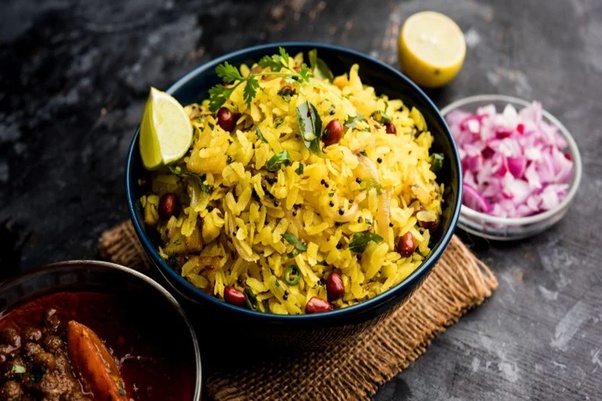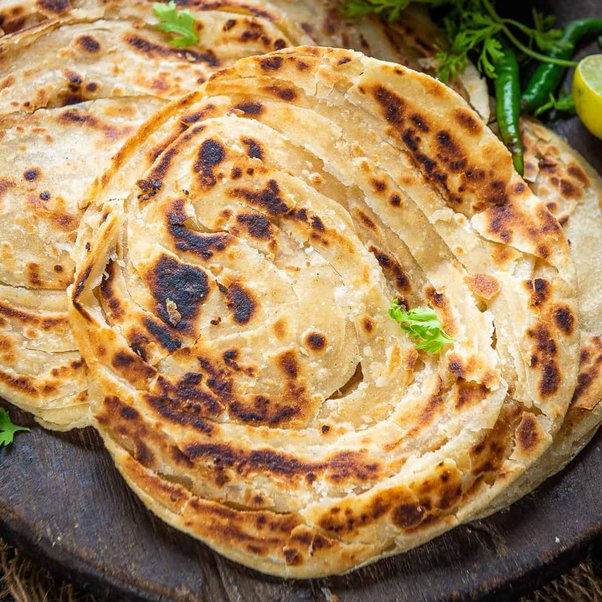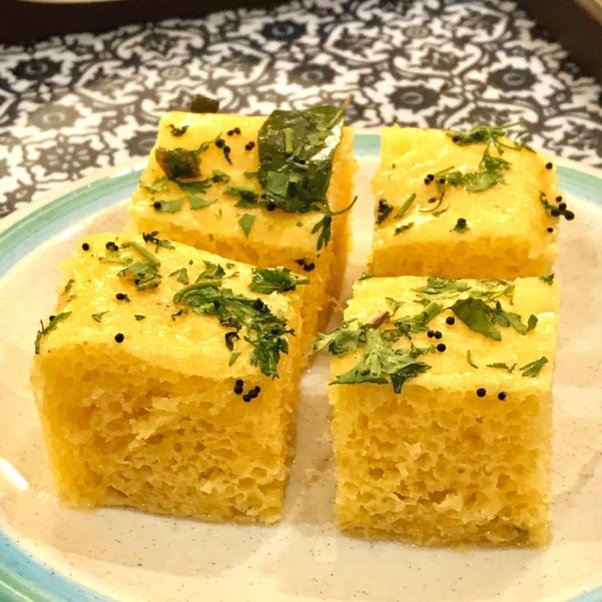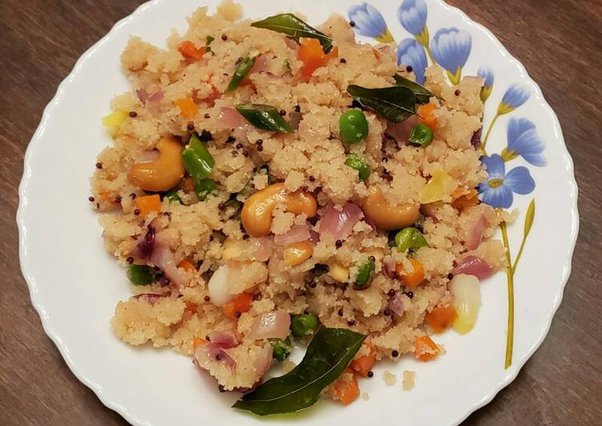India has a rich traditional culture, and the most cherished aspect of this gastronomic heritage is the array of traditional tiffin recipes. These recipes not only satiate our taste buds but also carry the essence of cultural history.
In this article, we embark on a flavorful journey to discover the Top 10 Best Traditional Tiffin Recipes in India, each dish brimming with authenticity and a touch of nostalgia.
Also, If you are interested in lunch boxes then you must check out these posts where I have covered the best lunch boxes according to your interest:
1. Idli-Sambar: A South Indian Classic

Begin your day with the quintessential South Indian breakfast delight – Idli-Sambar. Soft, steamed rice cakes paired with a tangy, aromatic lentil soup make for a perfect and nutritious tiffin option.
Ingredients:
For Idli:
- 2 cups idli rice
- 1 cup urad dal (split black gram)
- 1 teaspoon fenugreek seeds
- Salt to taste
For Sambar:
- 1 cup toor dal (split pigeon peas)
- 1 cup mixed vegetables (carrots, beans, potatoes)
- 1 large onion, finely chopped
- 2 tomatoes, chopped
- 1/2 cup tamarind extract
- 1/2 teaspoon mustard seeds
- 1/2 teaspoon cumin seeds
- A pinch of asafoetida (hing)
- 1 sprig curry leaves
- 2 tablespoons sambar powder
- 1/2 teaspoon turmeric powder
- 2 tablespoons oil
- Salt to taste
Instructions:
For Idli:
- Rinse the idli rice and urad dal separately. Soak them along with fenugreek seeds in water for 4-6 hours.
- Grind the urad dal and fenugreek seeds to a smooth batter. Grind the idli rice to a slightly coarse texture.
- Mix both batters, add salt, and let it ferment overnight or for at least 8 hours.
- Grease idli molds and pour the batter. Steam for 10-12 minutes until the idlis are fluffy and cooked through.
For Sambar:
- Pressure cook toor dal until soft. Mash it and keep aside.
- In a pan, heat oil, add mustard seeds, cumin seeds, hing, and curry leaves. Sauté until the seeds splutter.
- Add chopped onions and cook until translucent. Add tomatoes and cook until they are soft.
- Add sambar powder, turmeric powder, and salt. Mix well.
- Add the mixed vegetables and tamarind extract. Cook until vegetables are tender.
- Add the mashed toor dal and bring the sambar to a boil. Adjust consistency with water if needed.
Serving:
Serve the steaming hot idlis with a generous ladle of sambar. Enjoy this South Indian classic for a delightful and comforting meal!
2. Poha: The Heartwarming Maharashtrian Breakfast

Hailing from Maharashtra, Poha is a beloved breakfast dish made with flattened rice, seasoned with mustard seeds, curry leaves, and turmeric. This simple yet hearty tiffin recipe is a delight for the senses.
Ingredients:
- 1 cup flattened rice (poha)
- 1 large onion, finely chopped
- 1 green chili, finely chopped
- 1/2 cup green peas
- 1/4 cup peanuts
- 1 tablespoon oil
- 1 teaspoon mustard seeds
- 1/2 teaspoon cumin seeds
- A pinch of asafoetida (hing)
- 8-10 curry leaves
- 1/2 teaspoon turmeric powder
- Salt to taste
- Fresh coriander leaves for garnish
- Lemon wedges for serving
Instructions:
- Rinse Poha:
- Rinse the flattened rice (poha) under running water in a sieve. Drain excess water and set aside.
- Prep Ingredients:
- Chop the onion, green chili, and gather the green peas and peanuts.
- Cook Peanuts:
- In a pan, heat oil. Add peanuts and roast until they turn golden brown. Remove and set aside.
- Tempering:
- In the same pan, add mustard seeds. Once they splutter, add cumin seeds, hing, and curry leaves.
- Sauté Onion and Green Chili:
- Add chopped onions and green chili. Sauté until the onions become translucent.
- Add Green Peas:
- Mix in the green peas and cook for a few minutes until they are tender.
- Add Turmeric Powder:
- Sprinkle turmeric powder over the mixture. Stir well to evenly coat the ingredients.
- Incorporate Poha:
- Add the rinsed poha to the pan. Gently mix to combine. Ensure the poha is coated with the turmeric-infused mixture.
- Seasoning:
- Sprinkle salt according to taste. Continue to stir, allowing the flavors to meld.
- Cover and Steam:
- Cover the pan with a lid and let the poha steam on low heat for 2-3 minutes. This helps to soften the flattened rice.
- Garnish and Serve:
- Once done, uncover and garnish with roasted peanuts and fresh coriander leaves. Squeeze a bit of lemon juice for a zesty kick.
- Serve Warm:
- Poha is best enjoyed warm. Serve it with extra lemon wedges for those who like an extra citrusy touch.
This quick and simple Maharashtrian Poha breakfast is a delightful way to start your day, offering a medley of flavors and textures. Enjoy the heartwarming taste of traditional Indian cuisine!
3. Aloo Paratha: North Indian Comfort Food

Traveling to the North, we encounter the ever-popular Aloo Paratha. Stuffed with spiced mashed potatoes and roasted to golden perfection, this tiffin option is a favorite across generations.
Ingredients:
- 2 cups whole wheat flour
- 4 medium-sized potatoes, boiled and mashed
- 1 teaspoon cumin powder
- 1 teaspoon coriander powder
- 1/2 teaspoon red chili powder (adjust to taste)
- 1/2 teaspoon turmeric powder
- 1 teaspoon garam masala
- Salt to taste
- Chopped coriander leaves (optional)
- Ghee or oil for cooking
Instructions:
For the Dough:
- In a large mixing bowl, combine whole wheat flour with a pinch of salt.
- Gradually add water and knead to form a soft, pliable dough. Cover and let it rest for 15-20 minutes.
For the Potato Filling: 3. In another bowl, mix mashed potatoes with cumin powder, coriander powder, red chili powder, turmeric powder, garam masala, salt, and chopped coriander leaves if desired.
Assembling the Parathas: 4. Take a small portion of the dough and roll it into a ball. Roll it out into a small disc, placing a portion of the potato filling in the center.
- Seal the edges and roll it back into a ball. Gently flatten it with a rolling pin, ensuring the filling is evenly distributed.
Cooking the Aloo Parathas: 6. Heat a griddle or tawa over medium heat. Place the rolled paratha on the hot surface.
- Cook one side until small bubbles appear, then flip and cook the other side. Apply ghee or oil and cook until both sides are golden brown.
- Repeat the process for the remaining dough and filling.
Serving Suggestions: 9. Serve hot Aloo Parathas with yogurt, pickles, or a dollop of butter for a delightful North Indian comfort food experience.
Enjoy these flavorful Aloo Parathas, a perfect blend of spiced potatoes encased in a golden, crispy whole wheat crust!
4. Masala Dosa: A South Indian Delicacy

No exploration of traditional tiffin recipes is complete without the mention of Masala Dosa. A crispy, fermented rice and urad dal crepe filled with a flavorful potato mixture, served with coconut chutney and tangy sambar – a symphony of tastes.
Ingredients:
For Dosa Batter:
- 1 cup rice
- 1/2 cup urad dal (black gram)
- 1/4 cup chana dal (split chickpeas)
- Salt to taste
- Water for soaking and grinding
For Potato Filling (Masala):
- 3-4 medium-sized potatoes, boiled and mashed
- 1 onion, finely chopped
- 2 green chilies, finely chopped
- 1/2 teaspoon mustard seeds
- 1/2 teaspoon cumin seeds
- A pinch of asafoetida (hing)
- 1/2 teaspoon turmeric powder
- Few curry leaves
- Salt to taste
- 2 tablespoons oil
For Dosa:
- Oil or ghee for cooking
Instructions:
1. Dosa Batter Preparation: a. Rinse rice, urad dal, and chana dal thoroughly. Soak them in water separately for 4-6 hours. b. Grind rice and urad dal to a smooth batter separately. Mix both batters, add salt, and let it ferment overnight. c. The batter should be of pouring consistency.
2. Potato Filling (Masala): a. Heat oil in a pan, add mustard seeds, cumin seeds, asafoetida, and curry leaves. b. Add chopped onions and green chilies. Sauté until onions are golden brown. c. Add turmeric powder and mashed potatoes. Mix well, cook for 5 minutes. Add salt to taste. Set aside.
3. Making Dosas: a. Heat a non-stick or cast-iron skillet over medium heat. b. Pour a ladle of dosa batter in the center, spread it in a circular motion to make a thin dosa. c. Drizzle oil or ghee around the edges. Cook until the edges turn golden and crispy. d. Place a portion of the potato filling on one side of the dosa. e. Fold the dosa in half, creating a semi-circle shape.
4. Serving: a. Serve hot with coconut chutney and sambar.
Enjoy the authentic flavors of Masala Dosa, a beloved South Indian delicacy, right in your kitchen!
5. Dhokla: The Pride of Gujarat

From the western state of Gujarat comes Dhokla, a steamed and spongy cake made from fermented rice and chickpea flour. Light and fluffy, Dhokla is a healthy and delightful tiffin option.
Dhokla Ingredients:
- 1 cup chickpea flour (besan)
- 1/2 cup yogurt
- 1/2 teaspoon ginger paste
- 1/2 teaspoon green chili paste
- 1 teaspoon lemon juice
- 1 teaspoon eno fruit salt
- Salt to taste
For Tempering:
- 2 tablespoons oil
- 1 teaspoon mustard seeds
- 1 teaspoon cumin seeds
- 1/2 teaspoon sesame seeds
- Curry leaves (optional)
- 2 green chilies, chopped
- A pinch of asafoetida (hing)
Fresh Garnish:
- Fresh coriander leaves, chopped
- Grated coconut (optional)
Instructions:
- Prepare the Batter:
- In a mixing bowl, combine chickpea flour, yogurt, ginger paste, green chili paste, lemon juice, and salt. Mix well to form a smooth batter. Ensure there are no lumps.
- Ferment the Batter:
- Cover the batter and let it ferment for about 20-30 minutes. This helps in achieving a light and fluffy texture.
- Prepare the Steamer:
- Grease a steaming pan or thali with oil. Heat water in the steamer.
- Add Eno Fruit Salt:
- Just before steaming, add eno fruit salt to the batter and mix gently. You will notice the batter becoming frothy.
- Steam the Dhokla:
- Pour the batter into the prepared pan and place it in the steamer. Steam for approximately 15-20 minutes or until a toothpick inserted comes out clean.
- Tempering:
- Heat oil in a small pan. Add mustard seeds, cumin seeds, sesame seeds, curry leaves, green chilies, and asafoetida. Let it splutter.
- Apply Tempering:
- Pour the tempering over the steamed dhokla. Ensure it covers the entire surface.
- Cut and Serve:
- Allow the dhokla to cool for a few minutes. Cut it into square or diamond-shaped pieces.
- Garnish:
- Garnish with freshly chopped coriander leaves and grated coconut if desired.
Serve the dhokla warm with mint chutney or tamarind sauce. Enjoy this spongy and flavorful Indian snack!
6. Upma: A Versatile South Indian Staple

Upma, a savory semolina porridge, finds a place in the hearts of many. Seasoned with mustard seeds, urad dal, and vegetables, this dish offers a delightful medley of textures and flavors.
Ingredients:
- 1 cup semolina (rava/sooji)
- 2 tablespoons oil or ghee
- 1 teaspoon mustard seeds
- 1 teaspoon urad dal (split black gram)
- 1 teaspoon chana dal (split chickpeas)
- 1 onion, finely chopped
- 1 green chili, chopped
- 1/2 inch ginger, grated
- 1/4 cup peas
- 1/4 cup finely chopped carrots
- 1/4 cup finely chopped beans
- 2.5 cups water
- Salt to taste
- Fresh coriander leaves for garnish
- Lemon wedges for serving (optional)
Instructions:
- Roasting Semolina:
- Heat a pan on medium flame and dry roast the semolina until it turns light golden brown. Stir continuously to avoid burning. Once done, set it aside.
- Tempering:
- In the same pan, heat oil or ghee. Add mustard seeds and let them splutter.
- Add urad dal and chana dal. Fry until they turn golden brown.
- Vegetable Saute:
- Add chopped onions, green chili, and grated ginger. Saute until the onions become translucent.
- Add peas, carrots, and beans. Cook for a few minutes until the vegetables are slightly tender.
- Boiling Water:
- Pour 2.5 cups of water into the pan. Add salt to taste and bring the water to a boil.
- Adding Semolina:
- Gradually add the roasted semolina to the boiling water, stirring continuously to avoid lumps.
- Cooking Upma:
- Reduce the flame to low and cover the pan. Allow the Upma to cook for 5-7 minutes until it thickens, and the semolina is fully cooked.
- Fluffing and Garnishing:
- Once done, fluff the Upma with a fork. Garnish with fresh coriander leaves.
- Serving:
- Serve the Upma hot, optionally with a wedge of lemon for added zest.
Enjoy this warm and comforting Upma for breakfast or as a light meal!
7. Theplas: Gujarati Whole Wheat Flatbreads

Perfect for a wholesome breakfast or lunch, Theplas are whole wheat flatbreads infused with spices and often paired with yogurt or pickles. These robust tiffin treats have a special place in Gujarati households.
Ingredients:
2 cups whole wheat flour
1/4 cup besan (gram flour)
1/4 cup fresh fenugreek leaves (methi), chopped
2 tablespoons plain yogurt
1 tablespoon oil
1 teaspoon turmeric powder
1 teaspoon red chili powder
1 teaspoon cumin powder
Salt to taste
Water for kneading
Oil for cooking
Instructions:
Prepare the Dough:
In a large mixing bowl, combine the whole wheat flour, besan, chopped fenugreek leaves, yogurt, oil, turmeric powder, red chili powder, cumin powder, and salt.
Gradually add water and knead the mixture into a smooth, elastic dough. Allow it to rest for 15-20 minutes.
Divide and Roll:
Divide the dough into small lemon-sized balls.
Roll each ball into a round, flat disc, using a rolling pin. Aim for a thickness similar to that of a chapati.
Cooking Theplas:
Heat a tawa (griddle) over medium heat.
Place a rolled thepla on the hot tawa. Once you see bubbles forming, flip it over and drizzle a bit of oil.
Press down gently with a spatula, cooking until both sides are golden brown.
Repeat:
Repeat the rolling and cooking process for the remaining dough balls.
Serve Warm:
Serve theplas warm with yogurt, pickle, or any side of your choice.
Tips:
Adjust the spice levels according to your preference.
You can make a batch of theplas and store them in an airtight container for later use.
Theplas are perfect for breakfast, lunch, or as a travel-friendly snack.
Enjoy these delicious and spiced theplas, a staple in Gujarati cuisine!
8. Misal Pav: Maharashtra’s Spicy Street Food

Misal Pav, a spicy curry made from sprouted lentils, garnished with farsan, onions, and coriander, is a street food sensation from Maharashtra. This flavorful dish brings the streets of Mumbai straight to your tiffin.
Ingredients:
For Misal:
- 1 cup sprouted moth beans (matki)
- 1 cup sprouted green gram (moong)
- 1 onion, finely chopped
- 1 tomato, finely chopped
- 1/2 cup mixed sprouts
- 2-3 green chilies, finely chopped
- 1/2 cup finely chopped coriander leaves
- 1/4 cup tamarind pulp
- 1 teaspoon ginger-garlic paste
- 1 teaspoon mustard seeds
- 1 teaspoon cumin seeds
- 1/2 teaspoon turmeric powder
- 1 tablespoon Misal masala
- Salt to taste
- Oil for cooking
For Misal Masala:
- 2 tablespoons coriander seeds
- 1 tablespoon cumin seeds
- 1 tablespoon fennel seeds
- 1 tablespoon black peppercorns
- 4-5 cloves
- 2-3 cinnamon sticks
- 2-3 dry red chilies
For Serving:
- Pav (bread rolls)
- Finely chopped onions
- Chopped coriander leaves
- Sev (crispy chickpea noodles)
- Lemon wedges
Instructions:
1. Making Misal Masala: a. Dry roast all the ingredients for Misal masala until fragrant. b. Allow it to cool and then grind into a fine powder. Set aside.
2. Making Misal: a. Heat oil in a pan. Add mustard seeds and cumin seeds. b. Once they splutter, add chopped onions and sauté until golden brown. c. Add ginger-garlic paste and green chilies. Sauté for a minute. d. Add chopped tomatoes and cook until they are soft. e. Add turmeric powder, Misal masala, and salt. Mix well. f. Add the sprouted beans and mix thoroughly. g. Pour in the tamarind pulp and let it simmer for 15-20 minutes. h. Garnish with chopped coriander leaves.
3. Assembling Misal Pav: a. Toast pav on a griddle with a little butter. b. Serve the Misal in a bowl, topped with finely chopped onions, coriander leaves, and sev. c. Squeeze lemon juice over the Misal. d. Serve hot Misal with pav on the side.
Enjoy this flavorful Misal Pav, a popular Maharashtrian dish, bursting with spicy and tangy goodness!
9. Ven Pongal: South Indian Comfort in a Bowl

A warm and comforting dish, Ven Pongal is a South Indian delicacy made with rice and lentils, seasoned with black pepper, cumin, and ghee. It’s a soothing option for a satisfying tiffin experience.
Ingredients:
- 1 cup rice
- 1/4 cup split yellow moong dal (lentils)
- 4 cups water
- 1 tablespoon ghee (clarified butter)
- 1 tablespoon oil
- 1 teaspoon cumin seeds
- 1 inch ginger, finely chopped
- 1-2 green chilies, chopped
- 10-12 black pepper corns
- 1/2 teaspoon asafoetida (hing)
- 10-12 cashews, chopped
- Curry leaves (optional)
- Salt to taste
Instructions:
- Rinse Rice and Lentils:
- Wash the rice and moong dal together under running water until the water runs clear.
- Pressure Cook:
- In a pressure cooker, combine the washed rice, moong dal, and water.
- Cook on medium heat until you get 4-5 whistles or until the rice and lentils are soft and mushy.
- Prepare Seasoning:
- In a separate pan, heat ghee and oil together.
- Add cumin seeds and let them splutter.
- Add chopped ginger, green chilies, black pepper corns, asafoetida, and cashews. Sauté until the cashews turn golden brown.
- Tempering:
- Add the tempering mixture to the cooked rice and lentils.
- Mix well and add salt to taste. Adjust consistency by adding more water if needed.
- Optional:
- Add curry leaves for additional flavor.
- Serve Hot:
- Ven Pongal is ready to be served hot. You can enjoy it with coconut chutney, sambar, or a side of pickle.
Tips:
- For a creamier texture, you can add a splash of milk while cooking.
- Adjust the quantity of green chilies according to your spice preference.
- You can garnish with chopped coriander leaves for added freshness.
10. Khandvi: A Delicate Gujarati Delight

We conclude our journey with Khandvi, a delicacy from Gujarat. These silky, bite-sized rolls made from gram flour are a testament to the artistry of Indian culinary traditions.
Ingredients:
For the batter:
- 1 cup besan (gram flour)
- 1 cup yogurt
- 1 cup water
- 1/2 teaspoon turmeric powder
- 1/2 teaspoon hing (asafoetida)
- Salt to taste
For the tempering:
- 2 tablespoons oil
- 1 teaspoon mustard seeds
- 1 teaspoon cumin seeds
- A pinch of hing
- Curry leaves (optional)
- 2 green chilies, finely chopped
For garnish:
- Fresh coriander leaves, chopped
- Grated coconut (optional)
Instructions:
- Prepare the Batter:
- In a mixing bowl, combine besan, yogurt, water, turmeric powder, hing, and salt.
- Whisk the mixture well to ensure there are no lumps.
- Cook the Batter:
- Pour the batter into a non-stick pan and cook over medium heat.
- Keep stirring continuously to avoid lumps and ensure the batter thickens.
- Spread the Mixture:
- Once the batter thickens, quickly spread a thin layer of it onto the back of a greased plate or a clean surface.
- Roll the Khandvi:
- Allow the spread batter to cool for a few minutes, and then start rolling it gently from one end to the other.
- Cut into Rolls:
- Once rolled, use a knife to cut the rolled sheet into bite-sized rolls.
- Prepare the Tempering:
- Heat oil in a small pan, add mustard seeds, cumin seeds, hing, curry leaves, and chopped green chilies.
- Allow the tempering to splutter and become aromatic.
- Pour the Tempering:
- Pour the prepared tempering over the rolled Khandvi rolls.
- Garnish:
- Garnish with chopped fresh coriander leaves and grated coconut if desired.
- Serve:
- Your delicious Khandvi is ready to be served! It can be enjoyed as is or with green chutney.
Khandvi is a delightful Gujarati snack known for its unique texture and flavors. Enjoy making and savoring this tasty treat!
Conclusion:
In each of these Top 10 Best Traditional Tiffin Recipes in India, we find not just ingredients but stories, passed down through generations. These dishes represent the heart and soul of Indian households, bringing families together over a shared love for authentic flavors. So, why not add a touch of tradition to your tiffin and savor the heritage of India with these delightful recipes?
